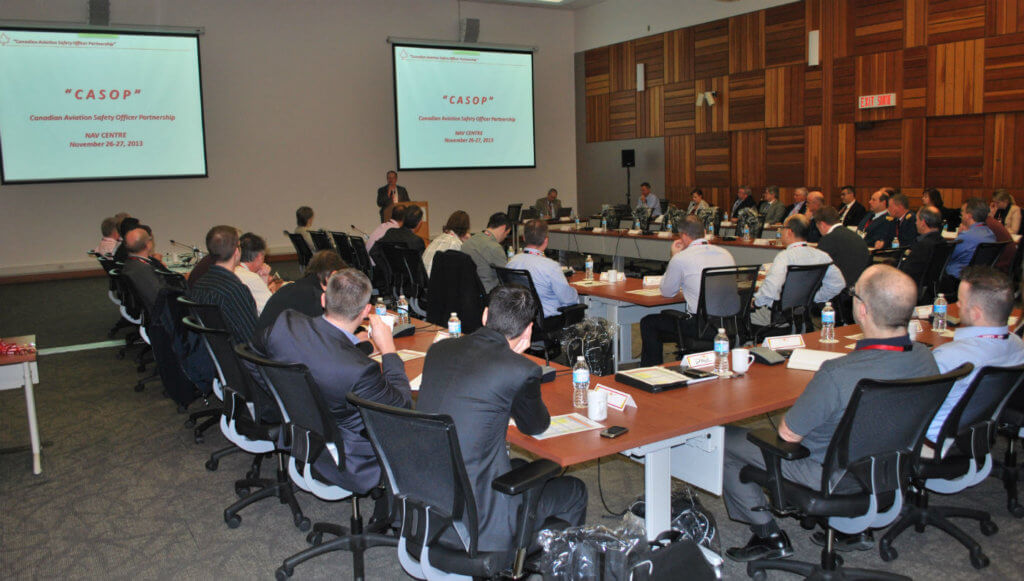Estimated reading time 4 minutes, 46 seconds.
When it comes to aviation safety there are no competitors and no company lines.
In this spirit, Nav Canada launched the Canadian Aviation Safety Officer Partnership (CASOP) in September 2010.

“At that time, there was a need to bring together safety representatives from different organizations to talk about some potential safety issues converging from a Canadian perspective,” explained Larry Lachance, vice-president of safety and quality at Nav Canada. “At the same time, from a regulatory perspective, there was a need to expand the sharing of safety information amongst the different stakeholders.”
Lachance oversees the CASOP process, which unites company aviation safety officers from more than 70 organizations, including airports, air operators and training schools. The group meets twice a year at various locations across the country, with meetings hosted by member companies.
“We have over the years expanded to include some additional representatives from other organizations,” said Lachance. “We want to make sure we can bring all the stakeholders and participants to the table.”
The idea behind CASOP is that many minds are better than one when it comes to promoting aviation safety. Not only do members share information, but common issues are identified and targeted for collective mitigation during the three-day meetings.
Representatives are also invited to table any safety-related issues being tackled by their respective organizations.
“At the last meeting, we discussed the mix of the experience level now joining the pilot community,” noted Lachance. “From a stakeholder perspective, how can we monitor that change and assist everybody in making sure we recognize this environment?”
Issues are identified and then a CASOP working group is tasked with examining topics in more detail. Other key areas explored by the group’s members have included the operation and regulation of unmanned aerial vehicles, runway incursions, unstable approaches, and laser attacks on aircraft.
This last topic was the subject of a formal statement issued by CASOP on Oct. 26, 2016, whereby the group calls for government to enact stronger legislation that will make pointing a laser at an aircraft a criminal offence. Swift and strong laser legislation is needed in order to promote the safety and security of all pilots and passengers, said the group.

“That [statement] was very well received from an airline, airport, pilot, and ATC [air traffic control] perspective, as well as the regulatory body being made aware of these efforts,” said Lachance, whose job it is to promote CASOP’s position with both government and industry. “We really want to have outcomes–action to be taken following each meeting.”
He added that the group remains committed to expanding the channels through which safety data is shared. Its work is highly regarded by the Transportation Safety Board as well as Transport Canada.
“The real benefit of CASOP is when we share everyone’s initiatives in trying to address these key issues, most often we find out that there are areas where we can collaborate more,” said Lachance. “I think that’s really the area where we find the biggest benefit. I see huge benefits in talking about what we’re all doing and seeing where there are convergences of potential efforts.”
Membership in CASOP is free of charge and is open to company safety officers and their representatives. For more information, email casop@navcanada.ca.








